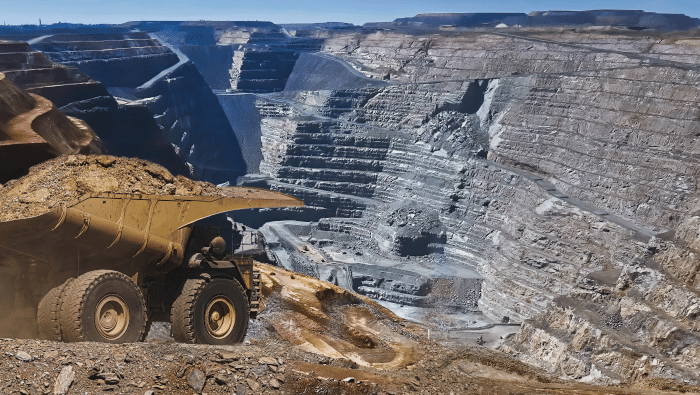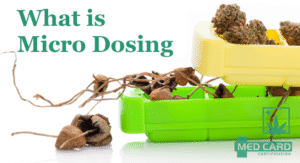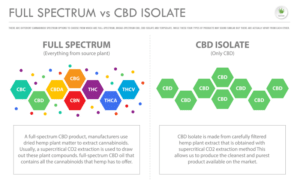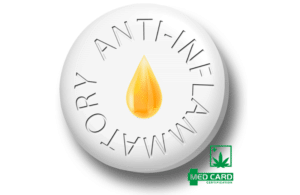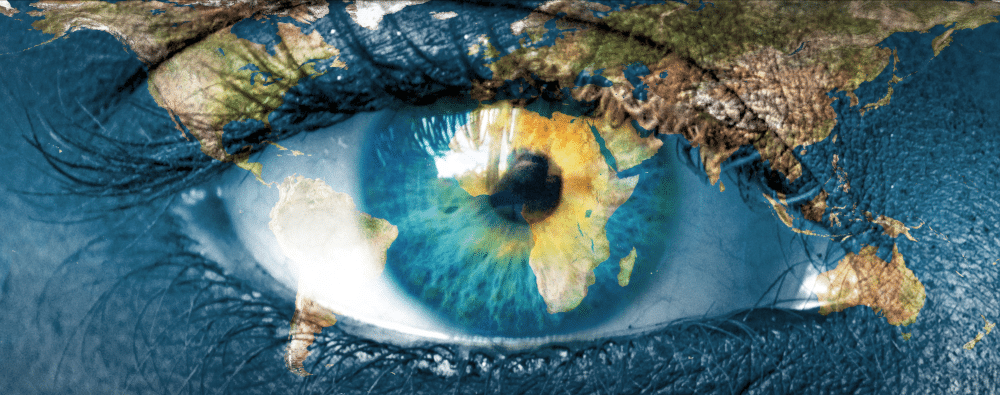
Earth, Us and Cannabis: The Endocannabinoid Connection
- Similarities of water in the body and biosphere.
- Ecosystems of the earth and body.
- Homeostasis and how it integrates the Endocannabinoid System.
- Homeostasis of the Earth.
- How cannabis connects the Earth and the human body together.
How are the Earth and Humans Similar?
Disparate as they may seem, the earth and the human body share a shocking number of similarities, from the blood in our veins and water in the sea, to the neurotransmitters in our brain and the compounds in cannabis.
Scientists and ecologists have long suggested that just like humans, the Earth is a living entity whose complex systems cooperate to vitalize and support the life of the planet as a whole. Like everything that occurs in our bodies and brains, everything that happens on Earth happens for a reason: to sustain life.
Life on earth is fueled by interconnected ecosystems that work together, in a constant balancing act, to keep our planet alive and healthy–just like the various interconnected systems that vitalize our bodies every day. Just as circulatory, respiratory, immune, and endocrine systems work together to support human life, our planet’s different ecosystems work together to support life on our planet.
In this article, we cover some of the countless similarities between our bodies and our planet, many of which–believe it or not–are best illustrated by our endocannabinoid system, from its interconnected physiological “ecosystems” to its production of cannabinoid-like compounds.
Elemental Equivalents: Water in the Body and the Biosphere

The similarities between Earth and humans start at the most fundamental level, from the basic elements that form our bodies and our planet–many of which are identical. Both the earth and the body are made up of oxygen, hydrogen, various minerals, and, most importantly, water.
Water accounts for approximately 71% of our planet, and for roughly 60 to 75% of the human body. Just as water accounts for the Earth’s oceans, rivers, and much of its atmosphere, water accounts for the majority of the blood in our veins, for many of our cells, tissues, and internal organs.
And the similarity doesn’t stop there. Did you know that the water in our blood has the same salinity as the water in the sea? As John F. Kennedy once reminded the nation:
“All of us have in our veins the exact same percentage of salt in our blood that exists in the ocean, and therefore, we have salt in our blood, in our sweat, in our tears. We are tied to the Ocean. And when we go back to the sea- whether it is to sail or to watch it- we are going back from whence we came.”
This is, in part, because humans and all other species evolved from microorganisms in the sea many millennia ago. For Dr. Andrew Schafer, our blood can “be thought of as a private ocean, a recapitulation of what life was like for all the years we spent drifting as microscopic, single-celled organisms taking up nutrients from sea water.“
Ecosystems in Biology and Physiology
Just as the earth’s oceans and rivers sustain its continents, the blood in our veins sustains various other physiological processes that support the most vital functions of life. All of earth’s ecosystems are interdependent, and so are the bodily systems that work together, day and night, to sustain human life. In this way, we can think of the human body as a diverse, interconnected ecosystem, as Dr. Lauren Panoff has pointed out:
“Just as rivers and streams bring water across lands and into the ocean on earth, humans have veins and blood vessels transporting blood throughout our bodies and microbes actively working together. There are more ecosystems in the human body than one could possibly count, ranging in all different sizes….Your entire body could be considered an ecosystem, as all of the parts work together to keep you as healthy as possible. And of course, you also have your body’s systems, such as respiratory, cardiovascular, endocrine, and immune, working nonstop.”
This cooperation between different, interconnected bodily “ecosystems” allows us to achieve homeostasis, a state of internal balance in which interconnected systems work together–constantly adjusting, counterbalancing, and cooperating–to establish a state of biological equilibrium. This allows our body to maintain a consistent internal environment, despite changing external factors.
Homeostasis & The Endocannabinoid System
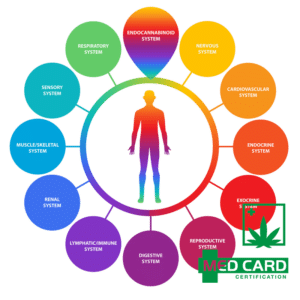
If you’re familiar with cannabis and its effects upon the human body, the phrase “homeostasis” may ring a bell, since it’s one of the most important functions of our endocannabinoid system (ECS). Our endocannabinoid system is the body’s “master regulatory system,” and it works constantly to balance interactions between our body’s various physiological “ecosystems,” from our nervous and immune systems, to our digestive, cardiovascular, and endocrine processes. According to Dr Dustin Sulak, “The endogenous cannabinoid system [is] perhaps the most important physiologic system involved in establishing and maintaining human health,” and it performs this function in virtually every area of the body. “In each tissue, the cannabinoid system performs different tasks, but the goal is always the same: homeostasis, the maintenance of a stable internal environment despite fluctuations in the external environment.”
Scientists have long known that homeostasis is crucial to human life, although the discovery of the ECS’s role in maintaining homeostasis is more recent. But did you know that the earth itself requires homeostasis, too, and that the earth’s ecosystems work together to maintain this equilibrium–just like the different systems in our bodies do?
Homeostasis On Earth
Like the various processes balanced by the ECS, the earth’s diverse ecosystems work together to achieve homeostasis, constantly cooperating to establish a stable, planetary environment in which human, plant, and animal life can flourish.
Defined independently of a medical or biological context, homeostasis is “the tendency toward a relatively stable equilibrium between interdependent elements.” And like the systems in our body, the diverse ecosystems that cover the earth’s surface–from oceans and deserts, to forests and wetlands–are constantly cooperating to balance the planet as a whole. According to National Geographic, “Every factor in an ecosystem depends on every other factor, either directly or indirectly. A change in the temperature of an ecosystem will often affect what plants will grow there, for instance….The whole surface of the earth is a series of connected ecosystems.”
Just look at forests and rivers. As different as they may seem, these two ecosystems are intimately connected, and work together to create a state of balance in the environment at large.
Forests absorb rainwater and snowmelt to prevent runoff into rivers, while the forest floor and the roots of its trees help to slow the movement of water that hits the soil. In doing so, the forest replenishes groundwater that feeds into the river’s flow. These ecosystems also provide nutrients to one another: when trees shed their leaves, they provide food for aquatic insects, which provide food for fish–and fish provide food for forest species such as birds, bears, and even nearby human populations. And finally, both forests and rivers work together to balance out their shared climate. When exposed to the sun, the water from rivers and streams evaporates and circulates throughout the atmosphere to keep the forest from getting too hot–just as the human body sweats to cool itself down. At the same time, forest canopies provide shade to keep river waters cool and habitable for fish, turtles, insects, and aquatic microorganisms.
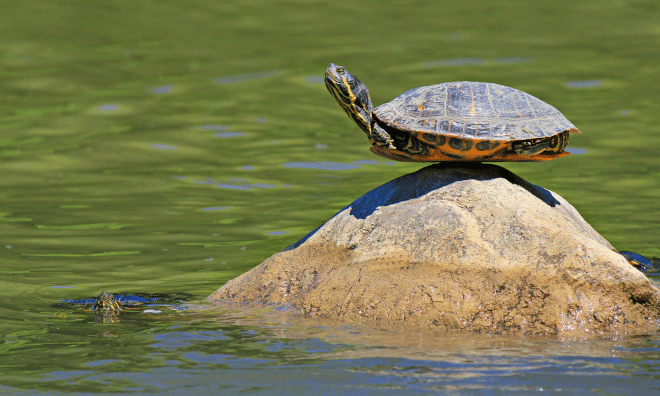
Biodiversity, Balance, and Immunity
This type of balance and cooperation between diverse ecosystems is called biodiversity, and biodiversity is crucial to the health of our planet as a whole. Balanced by biodiverse ecosystems, the earth strengthens its defenses against threats and interruptions, such as the spread of disease. When forests and rivers intersect, animals such as frogs, fish, and turtles feed on insects; this keeps the mosquito population in check, and limits the spread of diseases among the mammals that populate the forest, such as the bears that feed on fish in the stream.
In this sense, biodiverse ecosystems protect the planet much like the human immune system. Similar to a forest or river, the immune system relies upon other, seemingly unrelated physiological systems to function properly. Take sleep, for instance. Did you know that when we sleep, our body produces antibodies, cytokines, and other disease-fighting agents that protect us from infection while we’re awake? It follows that, when we’re sleep deprived, our immune system doesn’t work as well, and we become more vulnerable to infection. Likewise, when an area near a river is deforested, the stream loses its source of shade–the water becomes too hot to host the fish and reptiles that feed on insects, which allows mosquitoes to overpopulate, and to spread diseases throughout nearby mammal populations.
Humans, Plants, and Cannabinoids
Like humans, then, the earth has a biodiverse immune system; and like humans, it relies upon a series of interconnected ecosystems to maintain homeostasis. But the similarities don’t stop there–especially when it comes to the ECS.
Even at a molecular level, the human body produces compounds identical to those produced by nature–and here, too, the endocannabinoid system is a perfect example.
Researchers discovered the ECS in 1988, when scientists investigating the reason for THC’s effects discovered the presence of cannabinoid receptors, or CB1 and CB2 receptors, located throughout the body and brain.
All receptors in the human body share a similar function–they are designed to bind with, or to be unlocked by, specific molecules, with a specific shape: just like the lock on every door is fitted to a specific key.
So what molecules could “unlock” these newly discovered receptors, which cover nearly every part of our body and brain? Cannabinoids. When researchers compared the structure of these receptors with plant-based cannabinoids such as THC, the two fit together like a lock and key. In fact, these receptors could only be activated by compounds with the same molecular structure as CBD, THC, and other phytocannabinoids.
Scientists were baffled, and continued to conduct research to determine why the human body would contain a series of receptors designed exclusively to interact with compounds shaped like cannabinoids. After all, plant-based cannabinoids come from outside of the human body, so why would the inside of the human body have an entire cellular system meant to depend on them?
Just a few years later, scientists found an answer: our body produces its own cannabinoids, just like cannabis plants in nature do. In 1992, researchers discovered the presence of endocannabinoids within the human body and brain. “Endo-” is the prefix for “within,” and endocannabinoids are cannabinoids that are produced within the human body. However–and here’s another amazing similarity between our bodies and our planet–these endocannabinoids have a shape and structure identical to phytocannabinoids such as THC. Remember those cannabinoid receptors that researchers discovered in the late ‘80s? Only two of nature’s “keys” can unlock them–cannabinoids from plants, and cannabinoids from the body. As writers from Harvard Medical School put it, “All of us have tiny cannabis-like molecules floating around in our brains. The cannabis plant, which humans have been using for about 5,000 years, essentially works its effect by hijacking this ancient cellular machinery.”
This means that the body needs the presence of cannabinoids to maintain homeostasis, just as the earth needs diverse ecosystems to maintain biodiversity. And our body partially fulfills that need by supplying its own endocannabinoids. However, we can often become endocannabinoid deficient due to common lifestyle factors such as stress, diet, and lack of sleep–just as the earth can become deficient in its own resources, such as water or shade, due to human activities that interrupt homeostasis.
This is where cannabis comes in, and this is why our relationship with the cannabis plant dates back to the early stages of human history. When our body’s endocannabinoids are depleted, we can use cannabis as a substitute by replenishing our ECS with phytocannabinoids–our “spare keys,” so to speak, to the bodily ecosystems that help maintain homeostasis.
According to Raphael Mechoulam, who led the team that discovered the ECS, endocannabinoids regulate nearly all aspects of our physical and psychological health–from our mood and appetite, to our ability to recover from injuries and fight off diseases. A few years after his 1992 discovery, Mechoulam administered endocannabinoids to mice inflicted with brain injuries, and watched their recovery enhance miraculously–leading him to conclude that “We can compare endocannabinoids to the immune system.”
But like the earth’s ecosystems, all of the systems that cannabinoids and cannabinoid receptors influence are interdependent. When researchers discovered that CB1 receptors control appetite, the pharmaceutical industry invented a weight-loss drug to block it–soon thereafter, however, that drug was recalled for severe psychiatric side effects:
“They didn’t take into account that cannabinoids do other things, like lower anxiety,“ Mechoulam said. “So if you block appetite, you can increase anxiety at the same time. We have to take into account the many effects of cannabinoids.” In the same way, deforestation doesn’t impact just the forest–it impacts the surrounding water bodies and the species that feed on parasites and disease-carrying hosts, and can lead to outbreaks and dysregulated temperatures that may spread throughout the surrounding water and land bodies. Like the earth’s ecosystems, all of the bodily functions that the ECS controls are interconnected.
From cannabis plants to biodiverse ecosystems including us, the earth functions much in the same way that the human body does, and as environmental research continues, we’re learning more and more about the similarities between ourselves and the planet we call home: “There’s still so much more to be learned about the ecosystems that exist in humans and the planet,” said Dr. Perloff. Although for now, there’s enough evidence to show that making efforts to reconnect the two and care for them well is important for the health and longevity of both.


